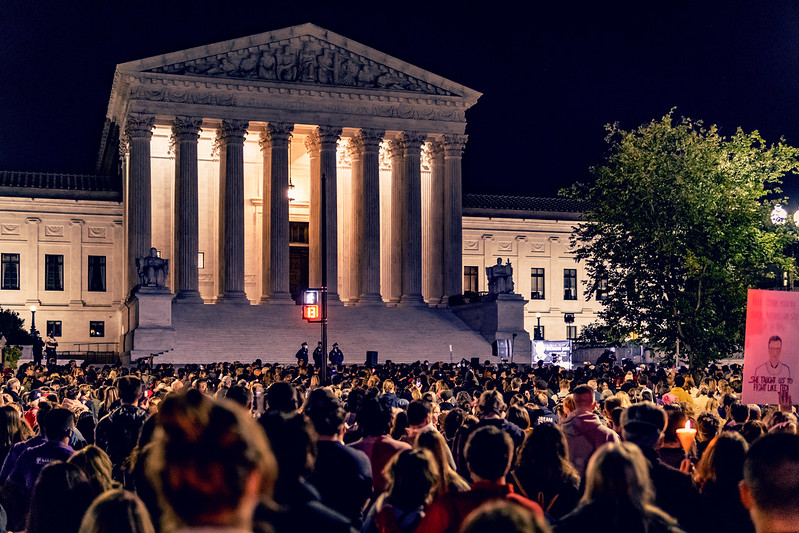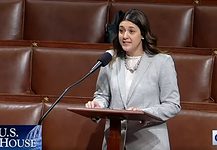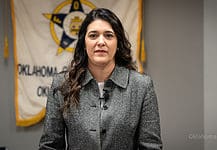Last Updated on September 20, 2020, 7:39 PM | Published: September 20, 2020
Before we fight for the future, we must know what now lies in our past. When U.S. Supreme Court Justice Ruth Bader Ginsburg died Friday at 87, she left behind a place that was far better than when she found it, but likely needs twice what her lifetime allowed to get where it needs to be.
When Ginsburg left her Russian immigrant father’s home in Brooklyn to attend Cornell University 70 years ago, it was at a time when women were being told to forget their recent history. During Ginsburg’s childhood, women worked hard in the wartime economy while thousands of men served overseas in World War II. But women’s status in the economy only lasted as long as the war itself. The culture, both real and popular, enforced gender roles, and women were told to raise children and tend to their husbands.
That was the prevailing attitude when she and her new husband, Martin Ginsburg, moved to Ft. Sill, Oklahoma, where Martin was stationed after being called up to active duty from the reserves. Ruth worked in the Social Security Administration at the base, but was demoted after she became pregnant with their first child, Jane.
Ginsburg’s time in Oklahoma was brief but pivotal, informing her legal work for the next 65 years. After Fort Sill, Ginsburg attended Harvard Law School and Columbia Law School, becoming the first woman to serve on both schools’ law reviews. When U.S. Supreme Court Justice Felix Frankfurter passed her up for a clerkship, she then clerked for the Southern District of New York before beginning her tenure as a professor at Rutgers University. There, she co-founded the Women’s Rights Law Reporter, a legal journal dedicated to women’s rights issues.

Throughout her career and much like one of her heroes, Supreme Court Justice Thurgood Marshall, Ginsburg focused on cases that could create legal precedent, and she saw Marshall’s work on behalf of people of color as a blueprint for her work on women’s rights. In her first argument in front of the Supreme Court, 1973’s Frontiero v. Richardson, Ginsburg argued on behalf of U.S. Air Force Lieutenant Sharron Frontiero, who was denied a housing allowance and medical benefits for her husband because she was a woman.
Ginsburg used the case to argue that sex discrimination was pervasive in both society and statutes, and argued that sex was to be “suspect criterion” when it came to issues in the workplace, including promotions. Before the court, she quoted foundational women’s rights leader Sarah Grimke, who famously said, “I ask no favor for my sex. All I ask of our brethren is that they take their feet off our necks.”
While the court found in favor of Frontiero (with future Ronald Reagan-appointed Chief Justice William Rehnquist dissenting), the case fell short of the five votes needed to adopt what is called “strict scrutiny” of sex discrimination caselaw, mainly because much of the court expected that it would be directly addressed by the proposed Equal Rights Amendment.
Two years later, in a move that was as strategic as it was virtuous, Ginsburg again argued before the high court in the case of Weinberger v. Wiesenfeld. Widower Stephen Wiesenfeld applied for Social Security benefits after the death of his wife Paula Polatschek, who was the principal breadwinner of the family, but was told the benefit was strictly a “mother’s benefit.” Health, Education and Welfare secretary Caspar Weinberger, who would become Reagan’s secretary of defense, fought the case to the Supreme Court.
In this case, Ginsburg won unanimously, opening up a phalanx of sex discrimination cases before the court. Ginsburg, in her typically unflappable way, argued calmly but emphatically in each case she brought, even when Rehnquist attempted to diminish her by saying, “You won’t settle for putting Susan B. Anthony on the new dollar?”
Two years ago, my wife and I attended a book signing and speaking engagement by Irin Carmon, co-author of The Notorious R.B.G.: The Life and Times of Ruth Bader Ginsburg, and it crystalized for me Ginsburg’s immense accomplishments in her life before and during her 27 years on the Supreme Court. It also illuminated why Ginsburg was so deeply important to my wife and all other women who fight for equal protection under the law. Ginsburg never, ever stopped fighting, even and especially when cancer gave her the fight of her life.
News of Ruth Bader Ginsburg’s death hit me hard, and like so many people who revered her, the Lang household was inconsolable and I was left feeling hopeless. I tweeted, “Nothing good is going to happen this year,” and I believed it as much as I did in 2016, a year in which I lost many of my cultural heroes and watched in horror as this nation elected President Donald Trump.
Ginsburg, ever the quiet badass, would not want us to wallow in our grief. She would say, much as she did in front of students at Harvard’s Radcliffe Institute for Advanced Study in 2015, “Fight for the things that you care about, but do it in a way that will lead others to join you.”
In the weeks ahead, we must all return the favor, and fight for the legacy of Ruth Bader Ginsburg.
George Lang has worked as an award-winning professional journalist in Oklahoma City for over 25 years and is the professional opinion columnist for Free Press. His work has been published in a number of local publications covering a wide range of subjects including politics, media, entertainment and others. George lives in Oklahoma City with his wife and son.











